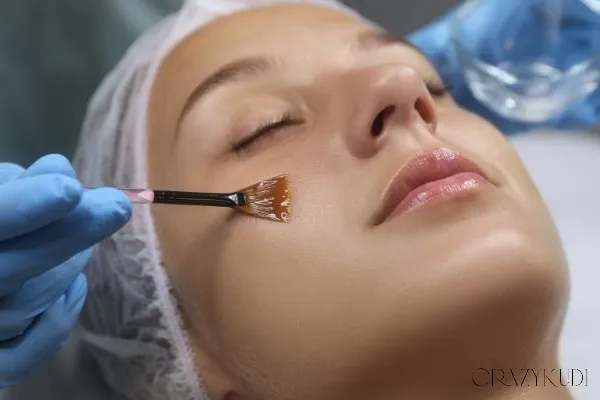As a board-certified dermatologist, I utilize a wide array of tools and treatments to help patients achieve their healthiest, most radiant skin. Among the most versatile and consistently effective options in our arsenal is the chemical peel. While the name might sound intense, modern chemical peels are sophisticated treatments that use specific chemical solutions to exfoliate the skin's outer layers in a controlled manner, triggering regeneration and revealing smoother, brighter, more even-toned skin underneath.
But how do you know if a chemical peel is the right next step for your skin? While a professional consultation is always necessary to determine suitability, certain common skin concerns often respond beautifully to this treatment. If you're experiencing one or more of the following, it might be time to discuss chemical peels with your dermatologist:
1. Your Skin Looks Dull and Lacks Glow:
- The Issue: Over time, dead skin cells accumulate on the skin's surface. This buildup diffuses light unevenly, leading to a dull, tired, lackluster appearance, regardless of how much you moisturize.
- How Peels Help: Chemical peels dissolve the bonds holding these dead cells together, effectively removing that dull surface layer. This immediate exfoliation reveals the fresher, brighter skin underneath and allows light to reflect more evenly, restoring a natural radiance or "glow." Superficial peels (like glycolic or lactic acid) are excellent for this.
2. Your Skin Texture Feels Rough or Uneven:
- The Issue: Beyond just looking dull, your skin might feel rough to the touch. This can be due to accumulated dead cells, clogged pores, residual texture from past acne, or early sun damage.
- How Peels Help: By promoting exfoliation and stimulating cell turnover, chemical peels smooth out textural irregularities. They help refine the skin's surface, making it feel softer and look more polished. Peels with ingredients like glycolic acid or salicylic acid are particularly effective here.
Also read: Seeing Red? A Dermatologist Explains 10 Common Causes of Red Spots on Your Skin
3. You're Battling Stubborn Hyperpigmentation (Dark Spots):
- The Issue: Unwanted dark spots – whether from sun damage (lentigines or "sun spots"), post-inflammatory hyperpigmentation (PIH) left behind after acne blemishes, or melasma (hormonally influenced patches) – can be frustratingly persistent.
- How Peels Help: Chemical peels accelerate cell turnover, helping to lift and shed pigmented cells from the skin's surface more quickly. Certain peeling agents also have pigment-inhibiting properties. Depending on the depth and type of pigmentation, different peels (from Jessner's solution to TCA peels) might be recommended, often as part of a broader treatment plan including topical lightening agents and strict sun protection.
4. Fine Lines and Early Wrinkles Are Becoming More Noticeable:
- The Issue: As collagen production slows with age and sun exposure takes its toll, fine lines start to appear, often around the eyes and mouth, or across the forehead.
- How Peels Help: While superficial peels offer mild improvement through exfoliation and hydration, medium-depth peels (like TCA) go further by stimulating the production of new collagen and elastin in the dermis. This helps to plump the skin from within, softening the appearance of fine lines and early wrinkles over time. (Note: Deeper wrinkles often require more intensive treatments like lasers or fillers).

5. You Experience Persistent Acne and Clogged Pores:
- The Issue: Acne involves clogged pores (comedones), excess oil, bacteria, and inflammation. Blackheads and whiteheads are direct results of blocked follicles.
- How Peels Help: Peels containing salicylic acid (a beta-hydroxy acid) are particularly fantastic for acne-prone skin. Salicylic acid is oil-soluble, allowing it to penetrate pores effectively, dissolve sebum and dead cell plugs, and reduce inflammation. Other peels like glycolic acid also help by exfoliating the surface and preventing future blockages. Regular light peels can be a valuable part of an acne management plan.
6. You Have Generalized Signs of Sun Damage:
- The Issue: Beyond discrete sunspots, chronic sun exposure leads to overall changes like uneven tone, rough texture, fine lines, and a generally weathered appearance.
- How Peels Help: By removing damaged outer layers and stimulating regeneration and collagen production, chemical peels can significantly improve the overall quality and appearance of sun-damaged skin, making it look healthier and more youthful. Medium-depth peels often provide noticeable results for moderate sun damage.
Also read: Hard Lumps Under Your Skin? A Dermatologist Explains Potential Causes & When to Worry
Important Considerations Before You Peel:
If these signs resonate with you, a chemical peel might be a great option, but it's not a one-size-fits-all solution. Remember:
- Types Vary: Peels range from very superficial (lunchtime peels with minimal downtime) to medium and deep, requiring more significant recovery time. The right choice depends on your skin type, concerns, and lifestyle.
- Professional Expertise is Crucial: Chemical peels are medical procedures. For safety and efficacy, they should only be performed by trained and experienced professionals, ideally a board-certified dermatologist or a highly trained clinician under their supervision. DIY peels or treatments by untrained individuals carry significant risks of burns, scarring, and hyperpigmentation.
- Not for Everyone: Peels may not be suitable if you are pregnant or breastfeeding, have active skin infections (like cold sores), have taken isotretinoin (Accutane) recently, or have certain underlying health conditions or very sensitive skin types.
- Sun Protection is Paramount: Post-peel skin is highly sensitive to the sun. Strict sun avoidance and diligent use of broad-spectrum SPF 30+ sunscreen are absolutely mandatory to protect healing skin and prevent complications like hyperpigmentation.
- Results Take Time: While superficial peels offer immediate glow, deeper results for texture, pigment, and lines often require a series of treatments spaced several weeks apart.
Conclusion:
Chemical peels are a powerful tool for addressing a wide range of common skin concerns, from enhancing radiance to improving texture, fading dark spots, softening lines, and managing acne. If you recognize your skin in the signs described above, it may indeed be time to explore this option. The next step? Schedule a consultation with a board-certified dermatologist. We can assess your skin, discuss your goals, determine if you're a good candidate, and recommend the most appropriate type and depth of peel to help you safely achieve your desired results.

